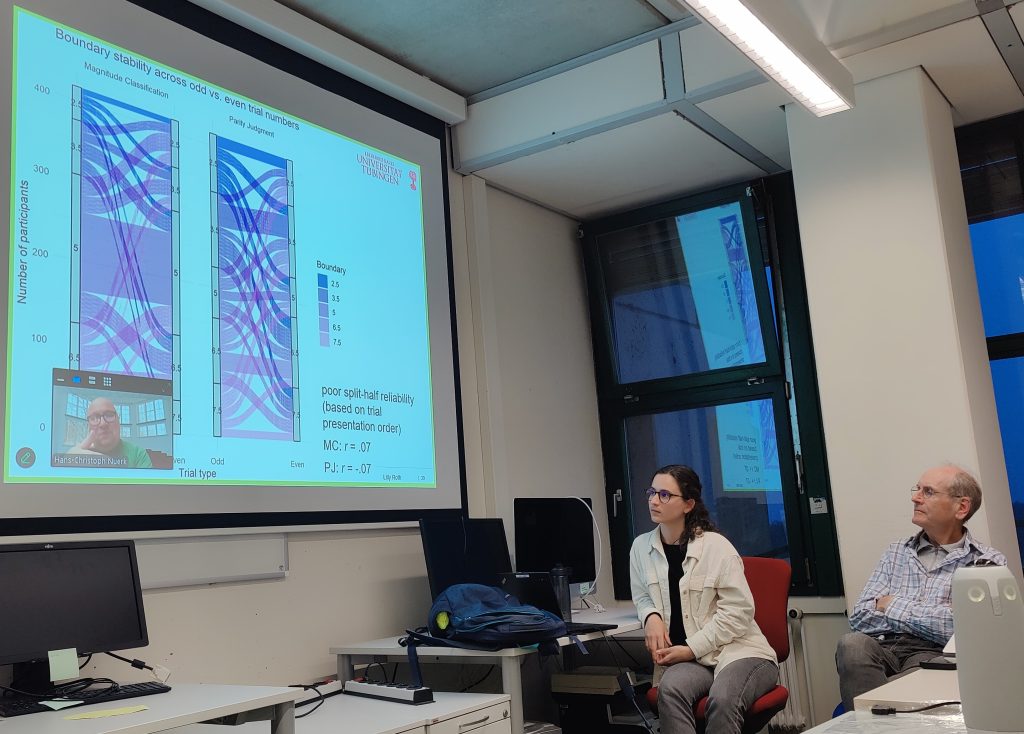At the kick-off of this semester’s research colloquium (FoKo), the iscience team was happy to welcome esteemed speakers Dietmar Saupe (Prof. emeritus from University of Konstanz) and Lilly Roth (Ph.D. candidate from University of Tuebingen – co-supervised by Prof. Reips).

Prof. Saupe gave a thought-provoking talk on computational models of how humans use Likert scales to rate visual objects (e.g. images or videos) and how the information from this type of scale might optimally be used. 💪🏾 He introduced an innovative model to show the information that could otherwise get lost between the lines – of whole numbers, that is. 📊
After that, Lilly Roth showed new data from an ongoing experiment investigating the SNARC effect, denominating the spatial-numerical association of response codes between the left and right. The SNARC effect occurs as humans typically respond to small numbers faster when they need to respond with their left and vice versa with large numbers on the right. However, it is not clear whether this effect is truely continuous (i.e. the larger the more right) or whether it may be more categorical depending on the task (i.e. humans have a subjective boundary between small and large numbers). 🤔 The paper was published in a registered report, now data collection is ongoing. Stay tuned! ✨
We greatly appreciate our speakers as well as everyone who joined the (post-)colloquium in person and online! 🍾
